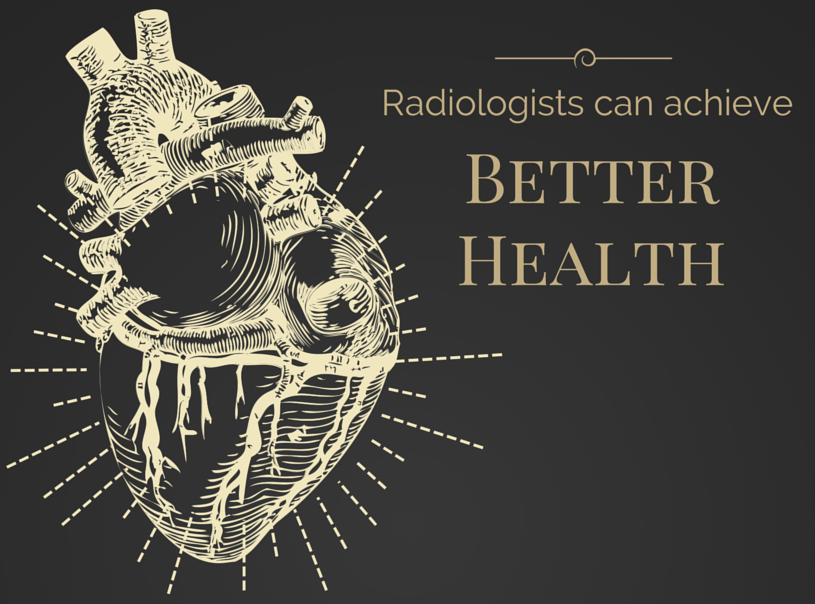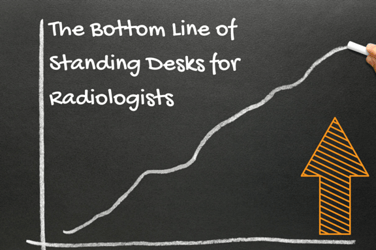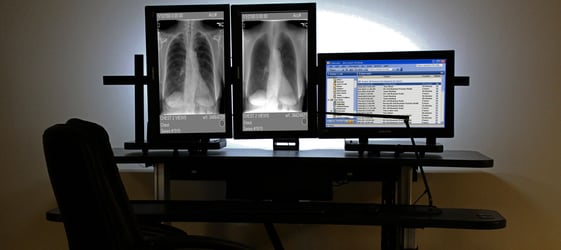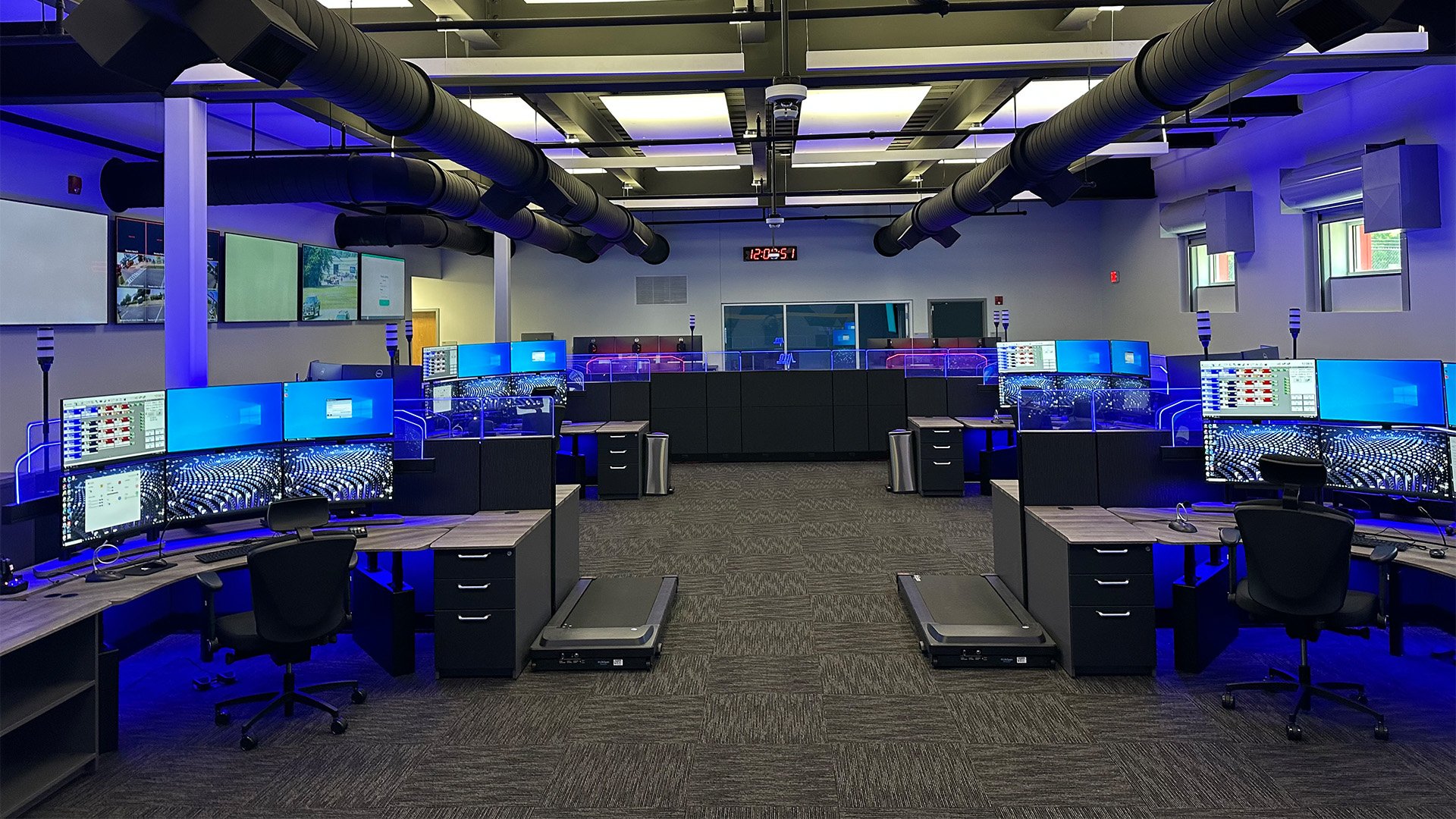
In my past life I worked in outside sales and was pretty active; I later accepted a position requiring me to sit at a desk for the majority of my working day. If anyone had told me then, in the nineties, that sitting at a desk all day could be hazardous to your health, they certainly wouldn’t have been taken very seriously.
Can Radiologists Achieve Better Health While Working?
Posted by Mike Graham on Aug 20, 2015 9:39:30 AM
Topics: Employee Health, Healthcare, Dispatch
 Is a standing imaging desk just a trend, or does it really benefit the bottom line for an imaging center?
Is a standing imaging desk just a trend, or does it really benefit the bottom line for an imaging center?
Let’s face it radiologists tend to love new technology (toys) which can hopefully make their job easier, faster, and better. Efficiency is great for both the doctor and the management, who is trying to maintain a healthy bottom line. So, does a height adjustable imaging desk fall into the category of improved efficiency or is it just a new toy for the doctor to use for a few months?
While the imaging desks are cool, let's face it, there are also some great health benefits to standing at work.
Topics: Ergonomics, Healthcare, Dispatch
Bias Lighting: Reducing Eye Strain for Radiologist
Posted by Mike Graham on Jun 19, 2015 10:46:00 AM
Typically, a radiologist’s work environment is a very dark room with the exception of the light coming from the monitors the goal being to interpret the digital imaging on the screen. Because the rooms are very dark and the screens are very bright, eyes can become fatigued. This increases the likelihood of headaches, and overall discomfort.

Topics: Employee Health, Features, Healthcare, Dispatch
 Thinking of re-modeling your imaging center? Maybe even replacing a few desks? Purchasing new furniture? Here are a few questions you should ask your next imaging desks provider:
Thinking of re-modeling your imaging center? Maybe even replacing a few desks? Purchasing new furniture? Here are a few questions you should ask your next imaging desks provider:
- Is it possible to have custom sizes that meet our environmental constraints without paying custom up charges? It is possible. Look for manufacturers who build their own product. What does this mean? Doesn't every manufacturer build their own stuff? No. Some companies just buy parts from other manufacturers and sell them as their product. This limits them to supply only what they have available, not what you need. Ask if they manufacture their entire product?
Topics: Healthcare, Pricing
Relatable Concerns Between Docs and 911 Dispatch
Posted by Kathleen Utley on Jun 5, 2015 12:51:05 PM
 If you are in the public safety industry and are familiar with Xybix, you may have noticed a few articles, emails and blogs from Xybix about imaging desks. Are you scratching your head and wondering what that is all about…? I realize most of associate Xybix as only selling height adjustable furniture to 911 dispatch, security and utility agencies. But, in fact, there are several other industries in which the ergonomic sit to stand furniture we provide can be beneficial.
If you are in the public safety industry and are familiar with Xybix, you may have noticed a few articles, emails and blogs from Xybix about imaging desks. Are you scratching your head and wondering what that is all about…? I realize most of associate Xybix as only selling height adjustable furniture to 911 dispatch, security and utility agencies. But, in fact, there are several other industries in which the ergonomic sit to stand furniture we provide can be beneficial.
Topics: Employee Health, Ergonomics, Healthcare, Dispatch
Monitor Distance and Viewing Angles: Is Your Imaging Desk Set Up Properly?
Posted by Mike Graham on May 8, 2015 3:47:00 PM
 It is a known fact that the optimum monitor placement would locate users monitors equal distance from the user’s eyes in order to minimize the need for the eyes to refocus when looking from screen to screen, thus reducing eye strain.
It is a known fact that the optimum monitor placement would locate users monitors equal distance from the user’s eyes in order to minimize the need for the eyes to refocus when looking from screen to screen, thus reducing eye strain.
Topics: Employee Health, Ergonomics, Healthcare, Dispatch

Everyone wants to save a buck. Trust me, I do, too! Sometimes I have visions of grandeur that I can make some quick repair around the house. And the way these projects usually turn out is that they are larger then anyone expected, taking longer then anyone expected, and usually doesn't get completed in the time frame expected.
Topics: Installation Information, Healthcare, Dispatch
 You can have say in what your reading room looks like! Every radiologist has sat at their imaging desk and thought how their life could be better if they just made a few changes to their room. Many radiologists come to us because they want to improve their room and their health. Some common issues we hear about room design:
You can have say in what your reading room looks like! Every radiologist has sat at their imaging desk and thought how their life could be better if they just made a few changes to their room. Many radiologists come to us because they want to improve their room and their health. Some common issues we hear about room design:
- "I am facing the wrong direction and cannot see people standing over my shoulder."
- "Some light is creeping in through the blinds making it hard to read my screens."
- "I do not have control over the climate in my room, I'm freeze or sweating all shift long."
- "I cannot dim the lights; they are either 'off' or 'on'."
- "My own voice bounces off the wall, making my dictation difficult."
- "I’m stuck sitting all day and cannot stand at my imaging desk."
Topics: Design, Healthcare, Dispatch
Common, Preventable, Workplace Injuries for Radiologists
Posted by Mike Graham on Mar 18, 2015 6:00:00 AM
 As a radiologist, it's no doubt that you spend a rather significant amount of time at a desk, behind a computer. The physical toll it takes on your body has to have crossed your mind. Not only do you risk becoming ill from germs on your keyboard and work surfaces, but you can also injure yourself. One of the most common preventable injuries amongst someone who spends a significant amount of time at a desk is related to the placement of the keyboard. Keyboard orientation is important to reduce muscular skeletal injuries. Whether sitting or standing, maintaining neutral alignment of the wrist along with an approximate 90 degree forearm-to-upper-arm relationship will significantly reduce the opportunity of injury.
As a radiologist, it's no doubt that you spend a rather significant amount of time at a desk, behind a computer. The physical toll it takes on your body has to have crossed your mind. Not only do you risk becoming ill from germs on your keyboard and work surfaces, but you can also injure yourself. One of the most common preventable injuries amongst someone who spends a significant amount of time at a desk is related to the placement of the keyboard. Keyboard orientation is important to reduce muscular skeletal injuries. Whether sitting or standing, maintaining neutral alignment of the wrist along with an approximate 90 degree forearm-to-upper-arm relationship will significantly reduce the opportunity of injury.
Topics: Employee Health, Ergonomics, Healthcare, Dispatch
Your top 3 price questions, answered
Most radiologists know the advantages of doing their work at a high-quality, height-adjustable workstation. The best radiology furniture not only delivers optimum comfort for doctors during long hours; it supports an ideal workflow and enables greater collaboration among the team.
So, what does a new radiology desk cost? We’ll cut straight to the chase here, followed by key considerations to help you maximize the furniture investment you make for the long term.
Topics: Healthcare, Pricing, Dispatch


